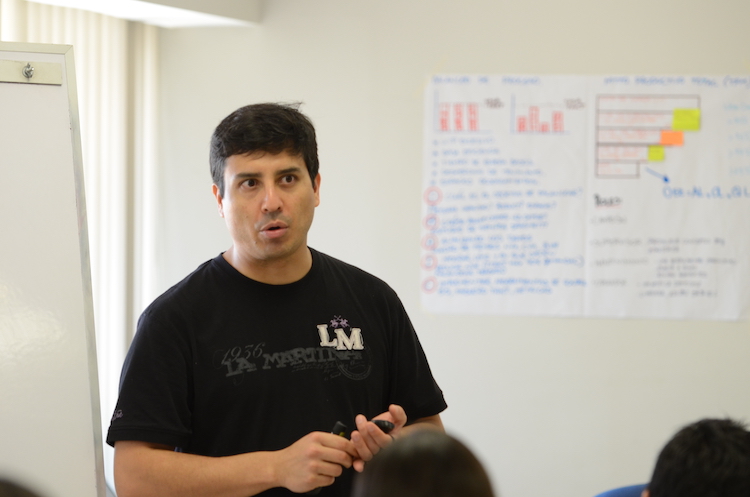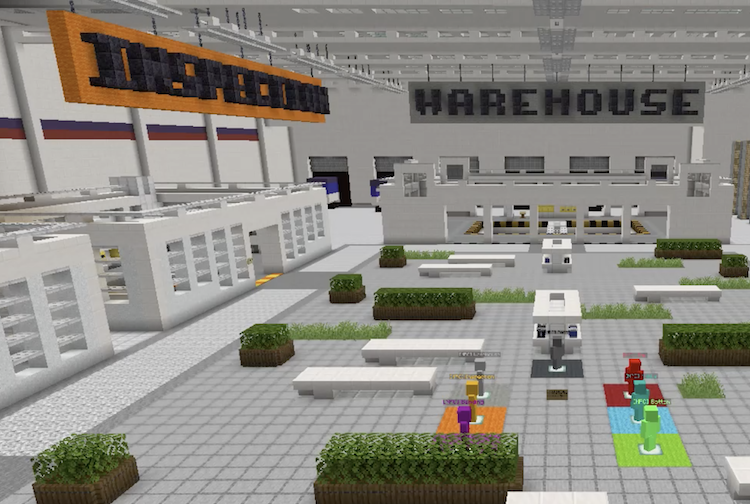Marco Rodriguez Tapia is the Master Black Belt of PepsiCo’s Lean Six Sigma training program for Europe. Over the past decade, Tapia has trained thousands of PepsiCo’s global employees on the team-based process improvement methods. “There is a huge effort in PepsiCo to teach Six Sigma at all levels of the organization and functions, from front-line workers to our lawyers, sales people and claims processors,” Tapia says.
Prior to the pandemic, that training occurred in face-to-face classes. “It’s a very dry topic, and because the audiences are so diverse, it’s difficult to do online,” he says. But when COVID-19 forced employees to work remotely, Tapia had to rethink their approach.
Initially, his team thought the shutdown would only last a few months and they could wait it out. However, as the pandemic stretched into June with no end in sight, they realized they needed a plan to keep the training program on track — but they struggled to find a model that would work.
“The pandemic accelerated our need to execute this training virtually,” says PepsiCo Chief Learning Officer Molly Nagler. “But there are few online Lean Six Sigma simulations with the interactivity needed for this type of training.”
A child would lead them
Tapia tried delivering the content via live online classes, using PowerPoint decks, discussions and quizzes to transfer the knowledge. But this didn’t have the desired impact. Satisfaction rates dropped 25 percent, and many trainees weren’t passing the tests. It turned out that just talking about Six Sigma wasn’t enough. “Zoom fatigue quickly proved that it could not be a viable solution for this critical training,” Nagler says. Trainees needed opportunities to practice the lessons in real-life situations if the new skills were going to stick.

Frustrated, Tapia started searching for immersion tools that might fill the training gap, when his 11-year-old son Alexander offered a suggestion. Why not use Minecraft to simulate the factory floor so employees could practice what they were learning?
“It was so obvious,” Tapia marvels.
Minecraft is a video game that lets users create three-dimensional worlds where they can solve challenges, go on adventures and interact with other 3D creatures. It’s a wildly popular game and can be used to create any type of environment or experience, from slaying dragons to creating more efficient product lines.
Tapia and his son played Minecraft together all the time. Within 30 hours, Alexander had built a prototype of a simulated PepsiCo plant where trainees could practice problem-solving and complete productivity challenges while building simulated pallets using virtual LEGO-style bricks.
Tapia shared his son’s model with the training team at PepsiCo, and they loved it. They took the prototype to Blockworks, a Minecraft custom developer based in London. Blockworks’ designers collaborated with a team from PepsiCo to translate all of the in-person Lean Six Sigma activities for Minecraft, using Tapia’s son’s prototype as a model, explains James Delaney, founder of Blockworks.
The biggest challenge for his team was making sure every virtual element could deliver the exact learning experience that PepsiCo needed — for every player. “Minecraft wasn’t designed to be a corporate learning tool,” Delaney says. “We had to push it to its limits to get it to deliver predictable results every time.”
To ensure it would work as expected, PepsiCo’s experts tested every feature as Delaney’s team created them, making sure they were consistent, user-friendly and appropriate to teach Lean Six Sigma’s main concepts. “We needed to ensure that any changes implemented would keep to the original simulation and appeal to participants worldwide,” Delaney says. “We did a lot of bug testing and play testing to make sure it worked.” They also translated the environment into seven languages to meet the needs of PepsiCo’s global audience.
Delaney notes that using Minecraft for this course isn’t a traditional “gamification of learning.”
Lots of training programs gamify content with leaderboards and point systems to earn external prizes as a way to engage learners in the process. But this is different, he says. “We took an existing popular game and built a learning simulation inside of it.”
The whole experience is built around Lean Six Sigma learning principles, and the engagement occurs through the game itself — with trainees tackling challenges and competing against other teams who are trying to build their pallets faster and with fewer errors. “It’s not about points and leaderboards. It’s about overcoming struggles as a team,” Delaney says.
How it works
Minecraft has been around for 20 years and has about 126 million active players worldwide. However, Tapia and Delaney knew that not every trainee would be familiar with the virtual game. So they built a pre-training area, where users could get familiar with the gaming mechanics before being immersed in the simulation.
When a trainee initially enters the game, it looks like the kind of foyer you’d expect to see in an old castle. There are looming stone walls with the occasional cracked segments that need fixing, and long hallways with helpful signs suggesting users pull a lever to make something happen or use the space key to jump over a hole in the floor. “People who know nothing about gaming can learn about the environment on their own in the lobby,” Tapia says. And if they are already familiar with Minecraft, they can head straight to the factory floor.

Like the in-person simulations from their live training program, the Minecraft environment mimics an imaginary distribution company that produces pallets of different products. The company needs to ship those pallets to the warehouse, which then will send them to customers based on the orders received. “The process can be quite inefficient, with the training focused on improving the process using Lean Six Sigma tools to reduce waste and increase profitability,” Tapia explains.
In the simulated factory, groups of eight to 12 players work in teams to collect different colored blocks and arrange them in order on a pallet according to a set of instructions. The teams have to work together to assign functions, check their work and identify ways to improve the process. As they progress, the challenges get more complicated, with blocks scattered around the space, broken elements and missing parts. It requires participants to use more advanced problem-solving and teamwork skills to complete each challenge.
“Using Minecraft to simulate a 3D PepsiCo warehouse enables our teams to solve problems in a virtual teamwork environment and complete the training in a fun, interactive and engaging way,” Nagler says.
Trainees spend about 45 minutes in the game, and then they regroup online to discuss the experience. They use Miro, a virtual whiteboard, to map out the lesson and to brainstorm strategies that could improve their performance. Working together after the simulation helps them debrief what they’ve learned and think about how they could do better. “It’s a holistic way for them to practice these skills online,” Tapia says. Trainees also spend time alone reading the material and discussing what they learned in live Zoom sessions.
Satisfaction soars
The program was rolled out in December 2020, and people were immediately excited to participate. The first users had high praise for the environment. Satisfaction rating ramped back up, and more people are passing the final test.
Demand for Lean Six Sigma training has also increased since the rollout, and there has been an overall change of attitude among trainees. “Now, they are excited and curious to do the training, which was not always the case with a five-day online course,” Tapia says. “This change of attitude and positive energy allows our teaching to be more effective and helps PepsiCo’s productivity and morale.”
And the result is a highly engaging and effective learning experience. “Novelty and stretching outside your comfort zone are two important components of learning,” Nagler says. “When you put learners in this role-playing game environment to learn new skills, it compounds the impact without being overwhelming.”
And for the thousands of employees working from home without a change of scenery, getting to spend time in Minecraft as a work activity adds a little fun to their day, Nagler adds. “Learners can walk away feeling like their online program was even better than the in-person alternative.”















